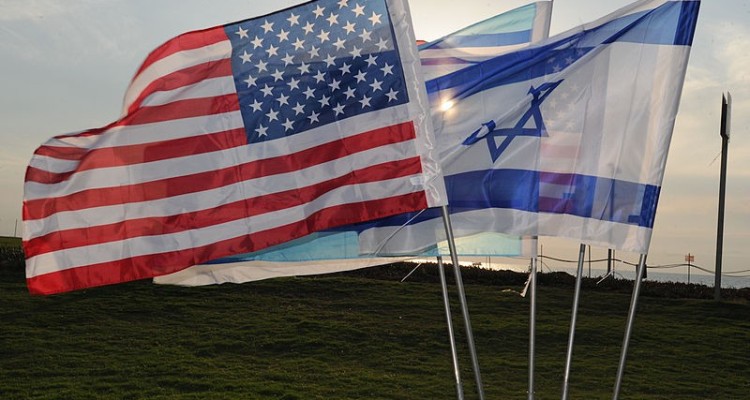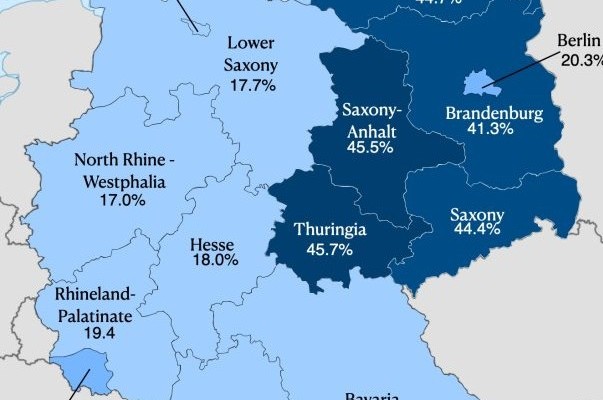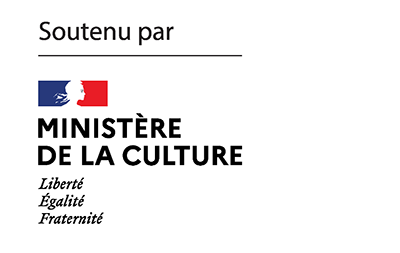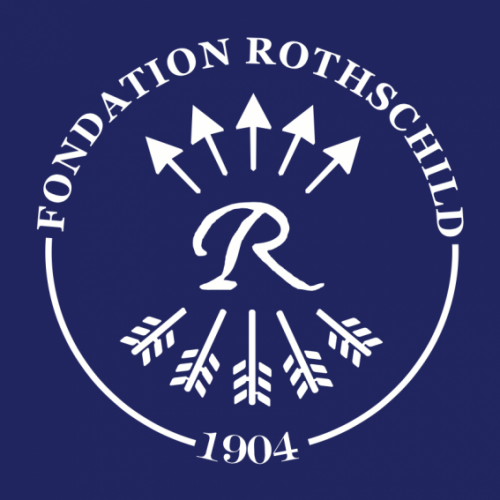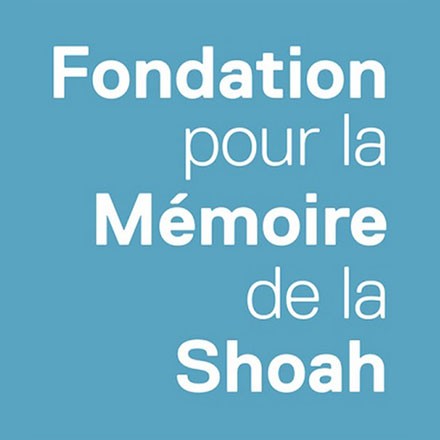The identity of Jews from Arab countries is the object of a conflict of legitimacy between the State of Israel and the supporters of the Palestinian cause. This article proposes a contextualization and reflection on the concept of “Arab Jew” and its political uses, following the controversy that erupted at the end of 2021 around the Institut du Monde Arabe’s exhibition “Jews of the Orient, a multi-millennial history”.
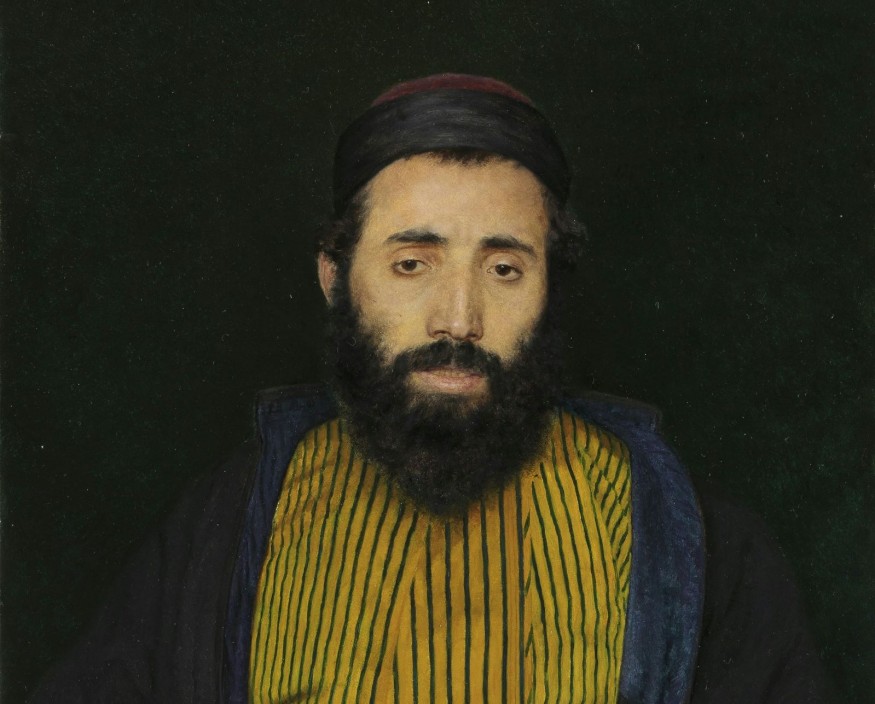
“Arab Jews”: both the label and the topic are currently back in the spotlight. This focus on “Arab Jews” was kicked off by the Institut du Monde Arabe (IMA) exhibition “Jews of the Orient, a multi-millennial history”, which ran from November 2021 to March 2022, and sparked debate due to the allegedly political uses the history and culture of Jews in Islamic countries, especially the ancient Jewish communities in Arab countries.
On December 6, 2021, an open letter from intellectuals and artists from the Arab world was published, strongly criticizing the IMA and “the positions taken by its festival ‘Arabofolies’ and its exhibition ‘Jews of the Orient’ which give explicit signs of normalization, this attempt to present Israel and its regime of settler colonialism and apartheid as a normal state (…) Israel, with the help of the world Zionist movement (…) has also appropriated the Jewish component of Arab culture, presenting it as Zionist, then Israeli, before tearing it away from its true roots to use it in the service of its colonial project in the region. Yet the culture of Arab Jews is an integral part of Arab culture and to cut it off from its roots is to deny part of Arab memory and history.”.
For the signatories of this letter, first and foremost Elias Khoury, the Jews of the Arab countries are Arab populations of the Jewish persuasion, their culture is a confessional variant of the Arab culture, and this judaïcité[1] has been usurped by the State of Israel, a usurpation that proceeds from the same logic as the usurpation of Palestinian territory. Despite the Zionist usurpation, Arab Jews are above all Judaizing Arabs, at best victims of Zionism, at worst traitors to the Arab nation. Note the deviousness of this a posteriori integration of the Jews into the Arab nation, since this rhetoric allows them to be designated as traitors. The Israeli spy Eli Cohen, for example, was tried in Syria for treachery to the Arab nation and not simply for espionage[2].
For the Jewish world, on the other hand, the prevailing view, including among Jewish communities in Arab countries, is that Jews in the Arab world formed an ethnic and religious community distinct from the majority population and linked by historical and cultural ties to the Jewish ethnic and religious minority in Europe, forming with them and a few others a whole called ‘am Israel or ‘am yehudi (People of Israel or Jewish people). The question then arises as to how to characterize and refer to the Jews of the Arab countries.
Who are the Jews from Arab countries?
The IMA exhibition uses the term “Oriental Jews”, a convenient misuse of language to refer to all non-Ashkenazi Jewish communities. In this respect, the exhibition can be accused of paradoxically reproducing the orientalist clichés of the Ashkenazi elite in power during the first thirty years of the State of Israel’s independence. In Israel, the term edot hamizraḥ (literally, “Oriental communities”) is used to refer to the Jewish communities of the Muslim world. Nevertheless, the debate generally focuses on the Arab world’s Jewish communities, which are demographically and culturally pre-eminent among non-ashkenazi Jewry, especially since these communities have found themselves caught between two identity categories, the Jewish and the Arab, which have become increasingly exclusive of each other in the era of nationalism and the Arab-Israeli conflict.
Nevertheless, the debate generally focuses on the Arab world’s Jewish communities, which are demographically and culturally pre-eminent among non-ashkenazi Jewry, especially since these communities have found themselves caught between two identity categories, the Jewish and the Arab, which have become increasingly exclusive of each other in the era of nationalism and the Arab-Israeli conflict. So, one could then speak of ‘Jews from Arab countries’, or of Arab Jews if one wanted to highlight the paradoxical situation of this group. The expression is not always used innocently and if the signifier makes the Jewish part the noun and the Arab part the adjective, the signified reverses the relationship making Jewishness an adjective of Arabness. Albert Memmi has dismissed the expression “Arab Jews”[3]. He uses it, and rejects it. He uses it in the same way as he speaks of “European Jews”. For Albert Memmi, Arab Jews are Arabs as European Jews are Europeans. Jews, in diaspora, are alienated : Their Jewishness, their Judaism, is alienated from an environment which is both hostile to them and to which they are nevertheless deeply acculturated. Jews are thus both deeply rooted and irrevocably alien. They are deeply impregnated with the culture in which they live, but are statutorily and ideologically segregated.
To speak of Arab Jews, or Jews from Arab countries, makes sense from a historiographic and ethnographic point of view: Without denying the internal diversity of Arab Judaism, it does constitute a unity in that it brings together diverse Jewish communities (Kabyle, Sephardic, Arabised) within an overall entity that is linguistically united (through the Arabic language) and ideologically united (through the Islamic theory of law and the State), inherited from the Umayyad Caliphate. The Arab-Muslim conquest of the seventh century had in fact brought together in a common framework the Jewish world, which had until then been divided between an Eretz-Israeli group and its Mediterranean diaspora under Roman domination and an Eastern diasporic group under Persian domination.Although the Umayyad conquest fractured Mediterranean unity, it brought the world’s Judaism together in a single geopolitical entity, with the exception of a few European isolates at the origin of the future Ashkenazi Judaism. Demographically and culturally, the Jewish world was essentially located in the Arab world from the seventh until the sixteenth century, when its demographic and cultural weight shifted towards the Ashkenazi world, while the whole of the Islamic world entered a phase of demographic and economic recession.
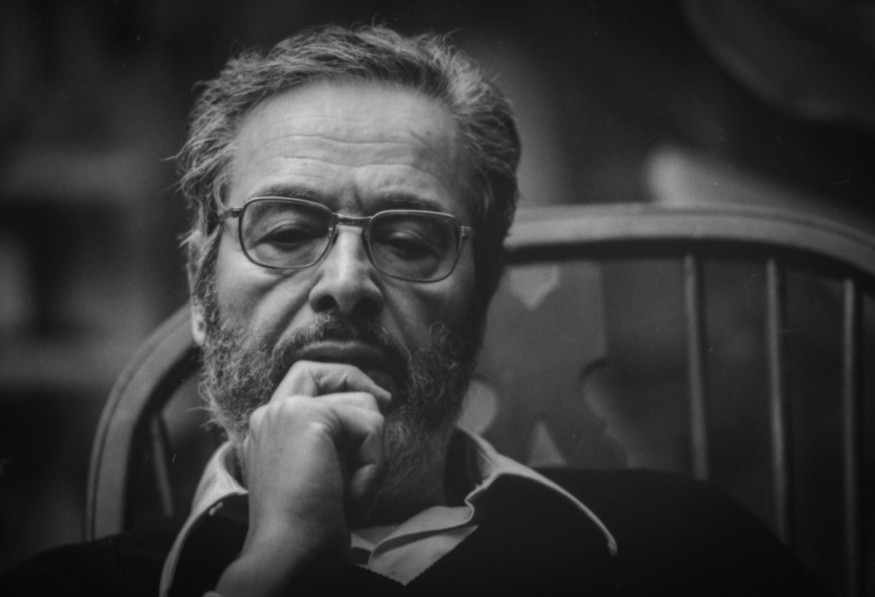
In the pre-modern Arab world, the Jews constituted a tributary population from which an instrumental elite could be extracted in the service of the conquerors: tax farmers, doctors, translators, merchants, diplomats, but whose social achievements were dependent on the acquiescence of the Muslim power. The social imagination of Arab countries thus depicts them as a property of power. Although a concept such as limpieza de sangre[4]was never used in Muslim states, conversion to Islam was not sufficient to abolish the infamous heritage of the Jewish condition, and it is to converts of Jewish origin that schisms and heresies in Islam are attributed, even the death of the prophet Muḥammad[5]. This rhetoric of Jewish conspiracy and corrupting activity is not an import of European colonialism, but is found already elaborated in Abbasid historiography. The Jews, on the other hand, continue to think of themselves according to their own traditional categories, both community of law and genealogy. They projected these categories onto Islam and the Arabs designated as Malkhut Yishma’el, the kingdom of Ishmael, even when the caliphate passed to the Berbers in the West and the Turks in the East.
Starting with the Nahḍa, the Arab renaissance of the nineteenth century, and under the influence of European nationalist ideas being imported the former Ottoman Empire, Arab identity was to be constructed as a national category, including Christians, but excluding Jews, despite the important contribution of the latter to the intelligentsia and state apparatus, particularly in Iraq, Egypt and Morocco[6].
This is why it is appropriate to question the use of the expression “Arab Jews” by Arab intellectuals and artists. How can we interpret this a posteriori recognition of the Arabness of these Jewish populations, after they have left the Arab territories, after having ceased to be an important element of Arab societies? The general rhetoric of the above mentioned open letter gives us the answer. In the expression Arab Jews, the function of the adjective is to abolish the nature of the noun Jew, to make it only a facet of the real subject, the Arab subject. Less than a Jewish-Arab culture, there would in fact be only a “Jewish component of the Arab culture“. The Jews are not a reality in their own right, but a part of the Arab heritage. Consequently, it is only possible to talk about them in terms approved by the Arab intelligentsia, and this is precisely what the IMA exhibition does not do, as it gives the floor to Jews from Arab countries, but not the “good” ones according to Elias Khoury, who puts forward an Israeli anti-Zionist academic, Ella Shohat. Born in Israel in 1959 to Iraqi Jewish parents, professor of Cultural Studies at New York University – author of “Sephardim in Israel: Zionism from the standpoint of its Jewish victims”. Social Text (1988) – Shohat sees the category “mizrahim” as a Zionist artifice to uproot Jews in Arab countries from their Arabness in favour of a uniquely Jewish identity, which she sees as being contrived, with a purpose to enlist them in the oppression of the Palestinian people. For her, the Mizrahim category is constructed in mirror image of the Ashkenazim category and is imbued with the negative archetypes linked to Orientalist representations.
These theses of Shohat are perhaps worth considering, but her claims to define Arab identity as the only authentic identity of the Mizraḥim and the irreducible opposition she portrays between this Arabness and Zionism as well as the claim of the Jews to self-define themselves as a people distinct from Europeans and Arabs, are nonetheless very objectionable.
Indeed, the ambiguities of the Jewish national condition and the blurred contours of Jewish national identity, as explored by Jacqueline Shohet Kahanoff (1917-1979) and Albert Memmi (1920-2020), seem to better describe the reality of the Jewish condition in the Arab context. However, Kahanoff and Memmi are Zionists, and therefore unwelcome in the picture painted by the censors of the history of Jews in Arab countries, who do not intend to see these Jews define themselves outside the terms of twentieth century political Arabism, from which they had been excluded.
The conditions of this exclusion belie the attempts of the signatories of the open letter to the A.I.M. to dictate the terms and acceptable partners to account for the varying conditions of Jews in Arab and Muslim countries. Between 1947 and 1972, nearly 800,000 Jews were expelled from the Arab League states, of whom 586,000 found refuge in Israel between 1948 and 1951 alone. This disappearance, in one generation, of cultures that sometimes predate the Second Temple period, should not be read only in the light of Israeli independence and the antagonism of Jewish and Arab nationalisms in Mandatory Palestine, but is part of the long history of asymmetric relations between Arab-Muslim powers and their non-Arab and non-Muslim tributaries since the conquests of the Rashidun and Umayyad Caliphates.
For although the Dhimma[7]was mostly abolished more than a century ago in the states of the Arab League (with the notable exception of Yemen), the mental structures inherited from it have persisted and still play a major role in the collective unconscious underlying the current conflict. They feed both the Israeli society’s feeling of being under siege and the narcissistic wound of the defeated Arab societies. They are hidden behind the agitated surface of controversies such as that of “normalisation”, of which the IMA is accused.
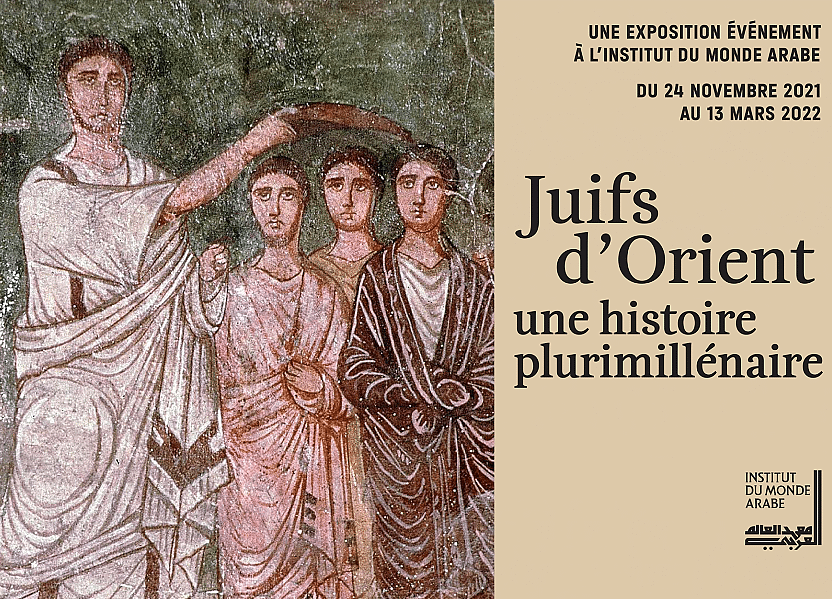
What “Jewish-Arab” culture?
The accusation of appropriation of “the Jewish componen of Arab culture” that we quoted above in extenso is historically erroneous and politically dubious. Historically, the Jewish presence in these territories preceded the Arab-Muslim conquest, and the acculturation of the Jewish population of these territories to the new conquerors in no way compromises their autonomy. The result is a one-sided and inegalitarian vision of the Jewish-Arab relationship which sees Jewish culture as a subaltern variant of the dominant culture without any substance of its own, while at the same time using the more acceptable terms of Shohat’s “hyphenated identities“. Thus, this accusation only reproduces the relations of domination that were those of the pre-colonial period in the Muslim city[8].
However, if the Jewish culture of the Arab countries is nourished by its environment, it rests on common foundations with the other Jewish cultures of Europe and Asia, prior to the emergence of Arab culture and has assimilated cultural elements subsequent to the Arab conquests and outside the geographical horizon of the Dar el-Islam. Otherness, which was not only religious, was also strengthened in reaction to the acculturation of the Jews to the Arab conquerors. The linguistic and philosophical work of Sa’adia Gaon (882-942) and the writings of the Baalei Massorah of Tiberias (c. 930) illustrate this. They came in reaction to the ideological and intellectual consolidation of Islam under the Abbasids and aimed to provide Judaism with a quality corpus capable of ensuring the resilience of Jewish culture in the face of the dominant culture; the legal and dogmatic codification of Judaism by Maimonides followed the same logic in a context of radicalisation of the attitudes of Islam towards minorities under the Almohads and then the Sunni Fatimids[9].
The link between legal codification, translations of the Bible into vernacular languages or stabilisation of textual traditions and political and cultural crisis is intimate. Whether it is Maimonides and his Mishne Torah, an immense codification of the Law, which aims to erect a textual monument that preserves the legal traditions of his Andalusian world destroyed in the midst of cruel persecutions and campaigns of forced conversions, or later Joseph Qaro’s Shulkhan Arukh following the expulsion of the Jews from Spain, these are the works of exiles who erect monuments of the mind that keep alive the memory of a world that no longer exists and yet must be preserved by other means to ensure legal and cultural continuity with the post-crisis Jewish world[10]. Similarly, the Castilian of the Maghrebi and Turkish Jews, the Aramaic of the Jews of Iraqi Kurdistan, the French disseminated by the Alliance Israélite Universelle, the choices to submit to consular protection or civic integration regimes with the colonial powers in the nineteenth century, are some examples of manifestations of Jewish otherness resisting the dominant culture. This Jewish otherness also found a specific political expression, notably through the militant proto-Zionism of the Sephardic rabbis Yehudah Hay Alkalay (1789-1878) and Yehuda Bibas (1789-1852), and the messianism of Yemeni Jews, which took place in a context of the decline of Muslim societies in the face of Europe and the progression of nationalist ideals within the minorities of Islamic empires. These Eastern Jewish cultures are therefore not only Judeo-Arabic, but are structured by additions and rearrangements of Arab, Berber, Turkish and European elements, around the Hebrew core.
The relationship to European imperialism and European culture is here a clear point of divergence with the Muslim majority populations in whose midst the Jews of the Orient live, as the Egyptian Jewish essayist Jacqueline Shohet-Kahanoff (1917-1979) notes : “When people find that their own culture no longer corresponds to their present needs or future expectations, what else can they do—if only to survive—than borrow elements of the foreign, dominant culture. (…) The reaction of the Levantine minorities to European influence was different from that of the Moslem majority. To the latter, European rule, overt or covert, was oppressive; to the minorities it was in many ways liberating, and they took to Western ideas and culture with enthusiasm (…) The failure of the Levantine minorities in the twentieth century was not that they were “superficially westernized,” but that in acquiring an essentially European culture and outlook, they were cut off from the body of the people among whom they lived, and who distrusted them as non-Moslems.[11]”
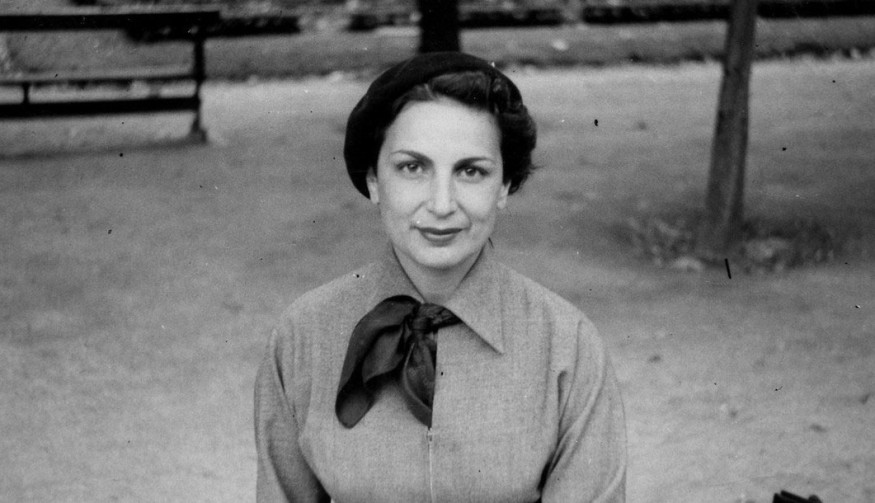
This compound, whose structure is the work of its Jewish elaborators, stands for itself, and if it has been largely liquidated within Arab societies, it has been integrated into Israeli society, where its subordinate position as a latecomer to the new Zionist society is being outgrown today. The historical position of the Jews of the Arab countries, at the conjunction of the Muslim masses, European colonialism and Zionism, constitutes the drama of the Mizrahi population in Israel, whose past is rooted in the vast expanses of the Dar-el-Islam and often predates it, but whose future is concentrated today within the borders of the Jewish State, and where for the first time Jewish political activity is not thought of as that of the companion of a distrustful, contemptuous or hostile majority, but as a popular majority working out its own future, thinking of its own emancipation, which makes Shohet-Kahanoff say that “the best thing that has happened in Israel is that the Eastern communities are no longer passive but vitally interested in what they will do with their future in Israel. “
This future is now inscribed in a “Jewish” category that is irremediably distinct from the “Arab” category, autonomous and sure of its own value. It is sometimes expressed in a supererogatory antagonism that gathers the Jewish masses under the flag of a militant neo-Zionism. But it also expresses itself in an activism that has generated interesting and complex political results, such as the role played by Jewish communist activists in Egypt in Arab-Israeli relations. The friendships of these activists, notably those of the Curiel network and the Rome group, with Tunisian and Algerian nationalists on the one hand, and Zionists on the other, laid the foundations for an embryonic Arab-Israeli peace. Thus in 1956 the Tunisian embassy provided protection to Egyptian Jews persecuted by Nasser, despite his own domestic Jewish policy, and Israeli-Egyptian and then Israeli-Palestinian negotiations were held from the 1950s onwards through Egyptian Jewish activists exiled in France. This complex part of the Jewish-Arab relationship is obscured by an Arab memory that only sees the Jew as a faithful, even servile, auxiliary of its own national liberation struggle. Symptomatically, betrayal itself becomes the epitome of evil in the psyche of the betrayed collective, and just as in Christian mythology Judah obscures Rome as the embodiment of evil, so in contemporary Arab discourse Jews and Zionism embody, recapitulate and ultimately supplant European colonialism as the figure of oppression. It is in this context that the discourse on “Judeo-Arab culture” must be understood. The accusation of appropriation of Judeo-Arab culture is to be considered with all the more circumspection, since unless it is enlisted in the struggle against Israel, this culture hardly arouses the interest of Arab cultural elites, and that a large part of contemporary Arab memories and ideologies have been built on the negation of the Hebrew heritage of the Arab-Muslim world, the eviction of Jewish populations from these countries, the confiscation, destruction or disaffection of the Jewish heritage in Arab lands. A rare exception is the Kingdom of Morocco, which recognises and claims a Hebrew heritage in its 2011 constitution, a precursor to the country’s normalisation of relations with Israel in 2020.
Israel’s legitimacy in relation to Jews in Arab countries
The Israeli society, which the signatories of the above-mentioned letter seem to find morally and intellectually impure, is nevertheless entitled to cooperate with the IMA on an exhibition on Jewish history and culture in Arab-Muslim lands. One cannot see how it could be otherwise, since the mizrahim of Israel directly inherit this Jewish history and culture from the lands of Islam. This legitimacy to carry the memory of Jewish communities in Arab countries is certainly not exclusive. Diasporic organisations and dissenting voices also have their contribution to make to the construction of Jewish memory in Arab countries. But Israeli legitimacy is preeminent, notwithstanding the revisionism of the intelligentsia of the Arab world. This pre-eminence is due as much to the demographic weight of its Mizraḥit population vis-à-vis the Jewish diasporas originating from Arab countries (and now mostly relocated to the West) as to the mission assumed by the Israeli state apparatus as guardian of the Jews. At a time when pogroms were multiplying from Morocco to Aden, the State of Israel was a refuge for a majority of Jews from Arab countries, organising major evacuation operations for communities whose situation was becoming precarious, notably “On the Wings of Eagles” (1949-1950), “Ezra and Nehemiah” (1950-1952) and “Yakhin” (1960-1964). The descendants of these emigrants represent today a majority of the Israeli Jewish population. Even the confrontation between the Ashkenazi old guard and the proletarianized edot hamizraḥ, struggling against a cultural hegemony that relegated them to subordinate positions, is today part of Israel’s national collective heritage, since it was the backdrop for the Israeli right’s conquest of power in 1977 and the formation of a genuinely popular religious party in 1984.
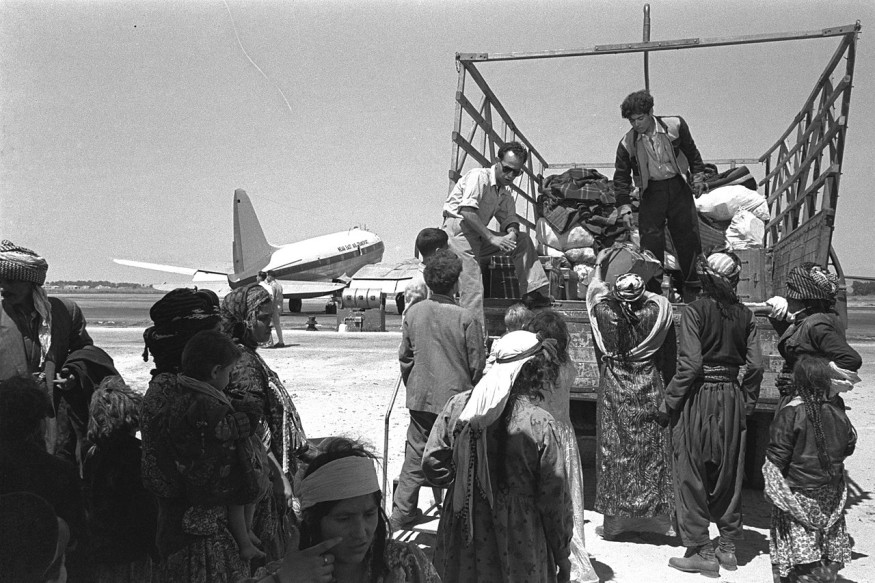
Since the “revolution” (HaMahapakh) of 1977, the edot hamizraḥ have formed the majority constituted electorate of the Israeli city. In the embryonic consociativism of the contemporary Israeli state, they have emerged as a structuring political force, no longer distinct but diffuse. The radicalisation of Israeli nationalism that they have carried is also part of the continuity of the affirmation of Jewish otherness in the face of Arabness, mirroring the dynamics adopted by the latter.
Thus, it is in Israel that the Jewish culture of the Arab countries has been preserved and developed, otherwise almost extinguished or liquidated in the rest of the Arab cultural area and the Western Diaspora. While this culture has suffered from uprooting and the struggle for recognition, it is now part of Israeli Jewish culture, for the first time in its history as a participant in the cultural life of the dominant majority group. Neta Elkayam, whom the IMA invited to the Arabofolies festival, is one of many representatives of this. Israel does not appropriate the Jewish culture of Arab countries, it is the edot hamizraḥ who have appropriated Israel and the country is now geographically and culturally equidistant from Odessa and Sana’a. These are all realities that the signatories of the open letter refuse to see: Jewish culture in Arab lands and its bearers are not their property, they are one of the elements that they have consciously expunged from their post-colonial political constructs and which now participate in the opposition to their political agenda.
The participation of Israel and the position of the IMA
Israel cooperated in the elaboration of the exhibition “Jews of the East”, both through the loan of pieces from Israeli museums and private foundations, through the participation of Denis Charbit, a Franco-Israeli academic, in the scientific committee of the exhibition, and through the invitation of Israeli artists. The degree of involvement of public authorities and private Israeli individuals is of little importance here for the signatories of the open letter who mainly attack Professor Charbit’s statements presenting the exhibition as one of the first fruits of the Abraham Accords. The IMA denied any link between the exhibition and the recent diplomatic developments, recalling that the exhibition was planned for a long time as the conclusion of a triptych on the three monotheistic religions in the Arab world. The fact remains that although the principle of the exhibition had been in place for a long time, its realisation owes much to the Abrahamic agreements, as Professor Benjamin Stora, the exhibition’s curator, reminds us in an interview given to Akadem at the end of 2021[12]. For the IMA is a foundation under private law, theoretically controlled equally by France and the Arab League States. Theoretically, 40% of the institute’s funding comes from the 22 League states, which in fact only provide 10%, with occasional larger contributions, such as Saudi Arabia, which in 2017 donated five million euros in addition to the twelve million euros allocated annually to the IMA by the French Ministry of Foreign Affairs.
The IMA is not an independent institution, and its freedom of action is limited by the diplomatic interests of Paris and the Arab capitals. Although they do not always pay the bills, the Arab states retain control over what is said about them within the institution. This is why the 2018 Suez Canal exhibition ended with panels praising President al-Sissi’s work to widen Lesseps’ work, openly flattering the current Egyptian regime. The IMA had to be courageous to include this exhibition in the continuity of those devoted to the pilgrimage to Mecca and to the Christians of the East, to evoke the multi-millennial presence of these indigenous Jews of North Africa and the Middle East, their history, their cultures, the conditions of their painful exodus and their integration in Israel. In taking this path, the IMA has chosen to break with the policy of denial of Arab cultural institutions and circles, although it had to deal with the reluctance and political interests of the Quai d’Orsay and the Arab League states.
Without the normalization between Israel, Morocco, Bahrain and the Emirates, it is not certain that the exhibition could have been held in such good conditions. The fact remains that Israel did not have a determining influence on the story presented by the exhibition, which is not really to its credit: concerning the exodus of Jews from Arab countries, the exhibition discreetly evokes the campaigns of anti-Semitic exactions and dwells at length on the role of Israel in this departure, the false promises and the poor reception given to the “Oriental” Jews by the Ashkenazi elites. A story that, while it challenges the myth of the young Israeli nation full of solidarity and heroism, is clearly pusillanimous towards Arab political myths. And yet this is progress. In the almost unanimous opinion of Jewish and Israeli circles, the simple fact of choosing to evoke the history and culture of these Jewish communities in Arab countries, their pre-Islamic origins and their contribution to Arab-Muslim civilisation was commendable.
Of course, it would have been presumptuous to ask to turn this exhibition into a tribunal of the nationalist homogenization policies carried out by the Arab regimes in the twentieth century, especially when these regimes are still among the institution’s financiers. Most of the actors involved in the work of memory relating to the exodus of Jews from Arab countries have understood this. But not the signatories of the open letter of the collective of intellectuals and artists of the Arab world for Palestine, published on 6 December, for whom the only thing that counts is the excessive fight against the only living refuge of this culture that they claim to protect from instrumentalisation. For in the end, what they are repressing behind the fashionable phraseology of emancipation struggles is their reaction of a fallen dominant who can only conceive of the other as a submissive or an enemy.
Elie Beressi and Noémie Issan-Benchimol
Elie Beressi is a political analyst.
Noémie Issan-Benchimol is a philosopher and a PH.d student in Religious sciences.
Notes
| 1 | In French, Judaïcité, That is, the Jewish population. The term, taken from the work of Albert Memmi, replaces the old word Juiverie (Jewry), which has been plagued in French by anti-Semitic connotations since the early twentieth century. It refers to a Jewish community in a given country and is distinguished from and articulated with the concepts of Judaism (which refers to the whole of traditions) and Judaïté, Jewishness (which refers to individual Jewish identity). |
| 2 | Eli Ben Hanan, Our Man in Damascus: Elie Cohen, Steimatzky House, 1969. |
| 3 | Albert Memmi, Juifs et Arabes, 1974, Gallimard. |
| 4 | Blood purity’ statutes aimed at discriminating descendants of Jews and Moors, imposed in the legislation of the Iberian Christian world from 1449 and prefiguring later European racist legislation. |
| 5 | Hela Ouardi, Les Derniers Jours de Muhammad, 2016, Albin Michel. |
| 6 | On this question, see in particular the testimonies reported in the following works: Bensoussan, Georges. Jews in Arab Countries: The Great Uprooting, 1850-1975, Tallandier, 2012 (paperback reprint, 2020); Memmi, Albert. Jews and Arabs, Gallimard, 1974; Weinstock, Nathan. Une si longue présence : Comment le monde arabe a perdu ses juifs, 1947-1967, Plon, 2008. |
| 7 | Litt. ‘covenant’ or ‘obligation’, refers to the set of statutory regulations governing the lives of non-Muslims in Islamic societies and confining them to a position of subordination to Muslims |
| 8 | In the words of Alexandre Journo, criticizing a book on so-called Berber identity of North Africa Jews : “Everything that touches a Jew transforms him (a foreign blood, a foreign idea). Everything the Jew touches remains authentically what it was before, he only gains the adjective “Judaizing”. […] it is improper to speak of Judaism or of Jews at all. This is the drama of authenticity: any external contribution, cultural or of population, to Judaism, makes it something Judeo-Persian, Judeo-Punic, Judeo-Phoenician, Judeo-Arabic, in the best of cases, but never really fully and authentically Jewish”. (in “Jewish Berbers: a falsification” Institute for Research and Studies on Radicalities, 30 July 2020. ) |
| 9 | See Sarah Stroumsa, “Almohad philosophers? Averroes, Maimonides and Almohad Ideology,” in Los almohades: problemas y perspectivas / Patrice Cressier (aut.), Luis Molina (aut.), María Isabel Fierro Bello (aut.), Vol. 2, 2005, pp. 1137-1162 and her monograph Maimonides in His World: Portrait of a Mediterranean Thinker, Princeton University Press, 2011. |
| 10 | On the link between codification and crisis, see Moshe Halbertal, Maimonides: Life and Thought, Princeton University Press, 2015. |
| 11 | Jaqueline Shohet Kahanoff, “What about Levantinization” (1972) Journal of Levantine Studies, Summer 2011, No. 1, pp. 13-22. |
| 12 | Tahar Ben-Jelloun , Nathalie Cohen, Benjamin Stora, “2000 ans d’histoire évacués : Séfarades, l’héritage exhumé” Akadem, november 2021 : https://akadem.org/magazine/magazine-culturel-2021-2022/les-sepharades-sont-les-heritiers-d-une-grande-histoire/45906.php |
